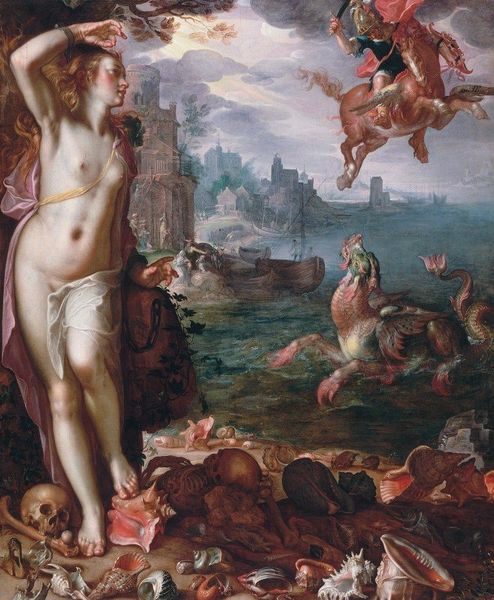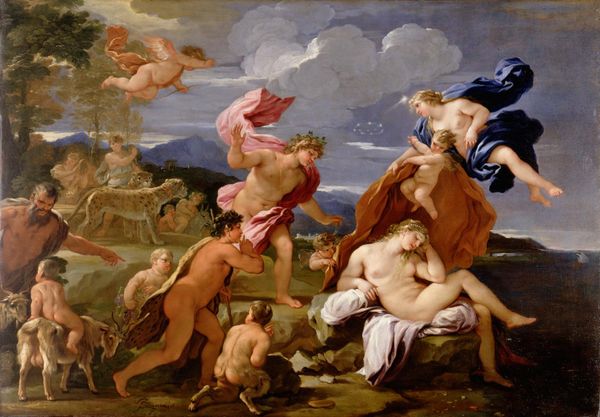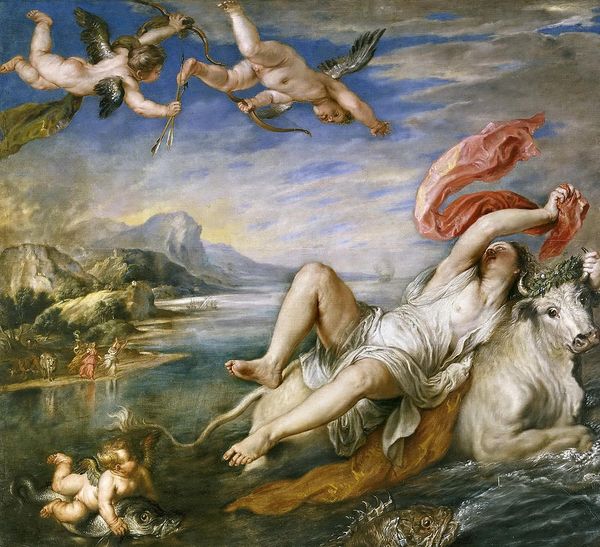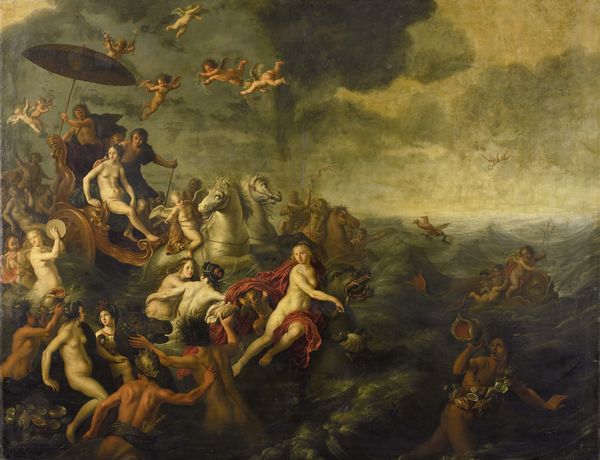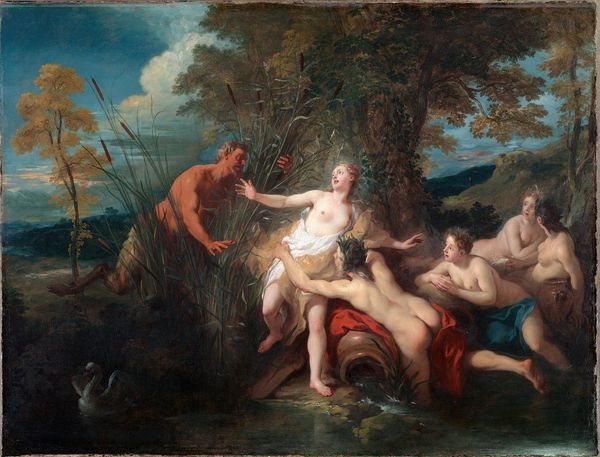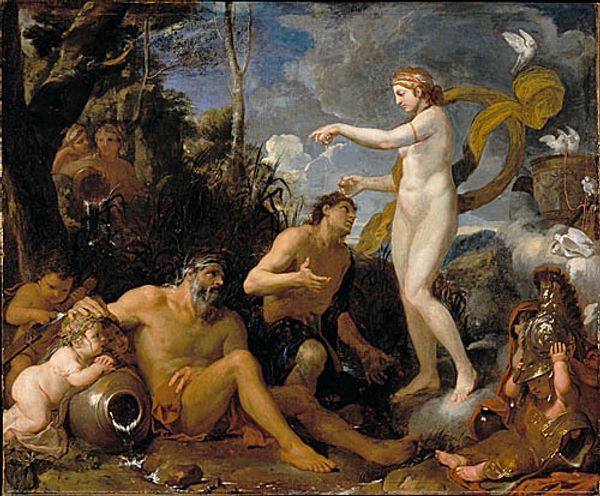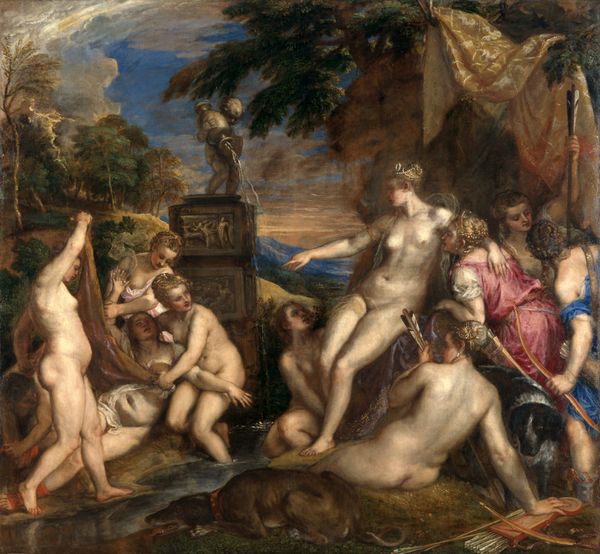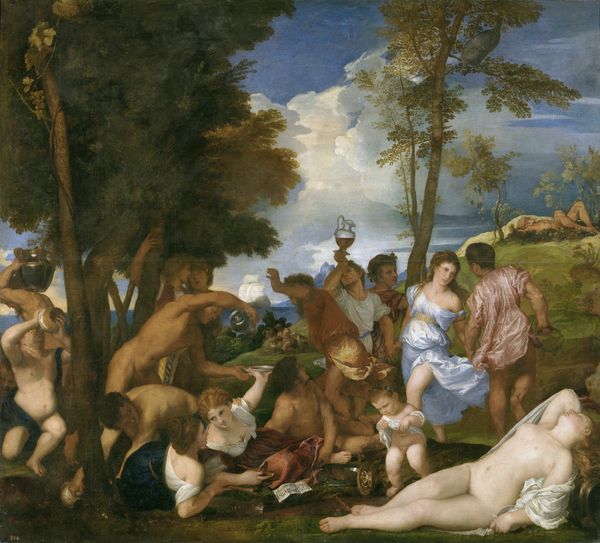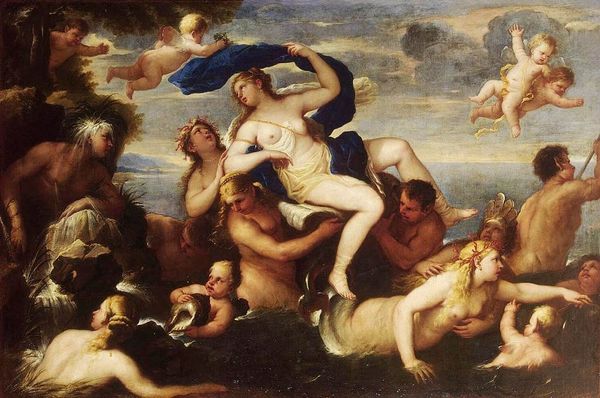
painting, oil-paint
#
allegory
#
baroque
#
painting
#
canvas painting
#
oil-paint
#
figuration
#
oil painting
#
painterly
#
history-painting
Dimensions: 34 x 42 cm
Copyright: Public domain
Curator: Hans von Aachen's "Allegory on the Battle of Sisak," created in 1604, presents a fascinating tableau of historical narrative through the lens of symbolic representation. Editor: It certainly does! My first impression is of organised chaos rendered with this painterly dynamism – there's such movement. And the subdued color palette contributes to an overall somber mood, especially contrasted with the vivid allegorical figures in the foreground. Curator: This painting depicts the Battle of Sisak in 1593, where Christian forces triumphed over the Ottoman Empire. However, instead of a literal depiction, von Aachen employs allegory to explore the deeper significance of this victory. It is also an explicit work of propaganda from Rudolf II to build support for the continuing Habsburg-Ottoman War. Consider the figures in the water: The Ottoman soldiers drowned and de-humanized by depicting them with animal heads and snouts. Editor: Absolutely. The symbolic figures of the water further amplify its intended propaganda purposes. In terms of pure pictorial qualities, the use of oil paint allows for a depth and luminosity, particularly in the figures of Pax. She holds olive branches while bestowing a laurel to Croatia, crowned to rule for a new reign, a true symbol of glory. It's a showcase of Baroque drama through composition and color. Curator: The presence of Pax and the Croatian figure are no accident. They illustrate the importance of understanding the roles and perspectives of different communities and the justifications that fueled actions taken during this volatile time in the Habsburg-Ottoman wars. By understanding the victors and what Pax meant by the victor’s definition, the audience is led to believe in that ideology through beautiful painting. The role of Pax isn't just aesthetic; it's deeply intertwined with the historical context of power dynamics at play. Editor: While understanding these concepts is essential, I feel one can't overlook the deliberate compositional structure. Notice the strategic positioning of the angel above Pax and Croatia and how their garments juxtapose against the backdrop of the battle. And higher in the sky is the Habsburg's personal bird above a crescent moon, driving the symbolic language further than simple battle and power dynamic painting. This arrangement draws the viewer’s eye into the very crux of the piece and its power structure. Curator: Studying "Allegory on the Battle of Sisak" through these socio-historical and formalist lenses unveils its multiple layers of meaning. Editor: It offers an experience where appreciation of its artistic mastery allows room for consideration of its significance as both historical record and art.
Comments
No comments
Be the first to comment and join the conversation on the ultimate creative platform.
